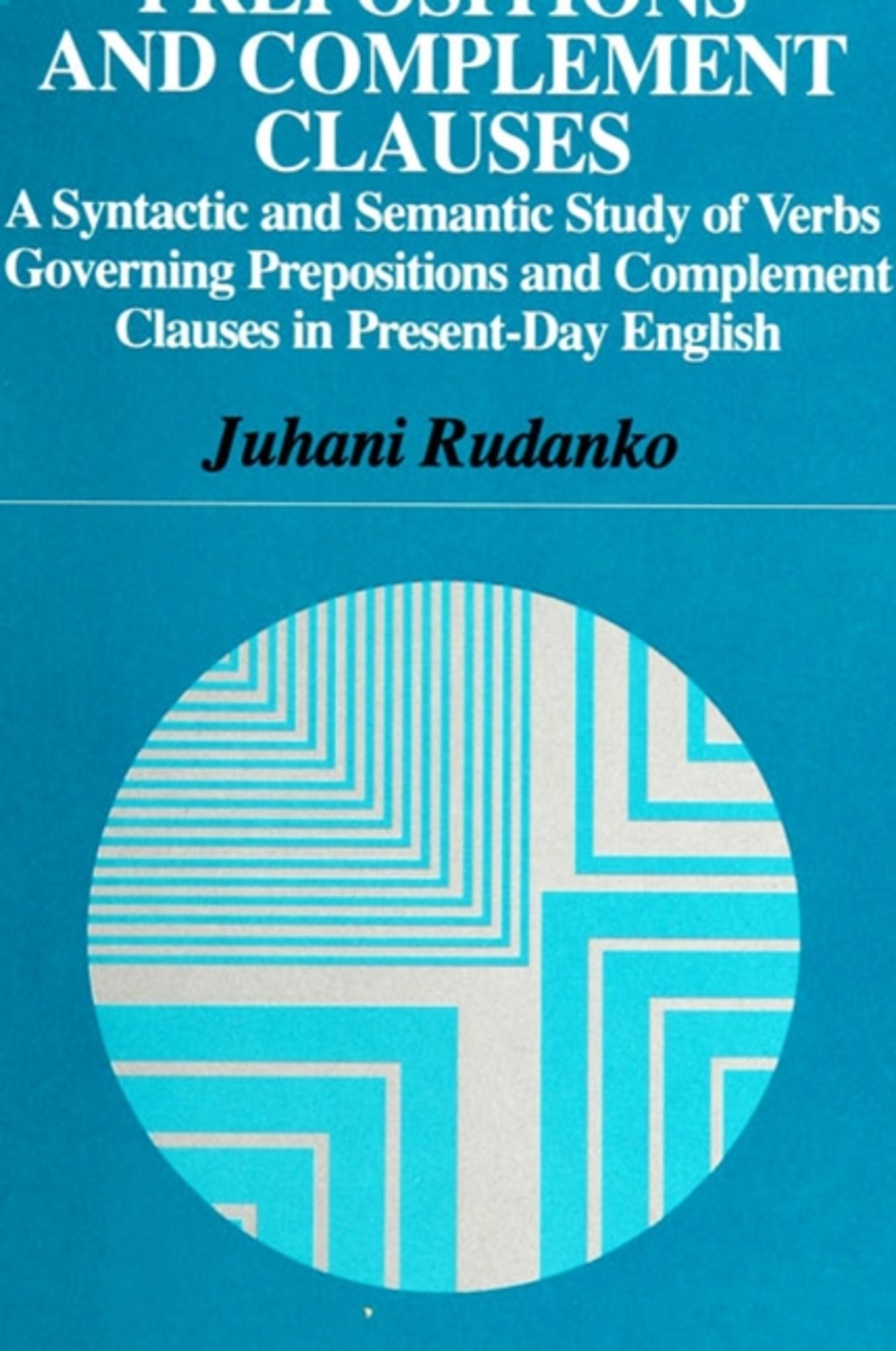We're sorry. An error has occurred
Please cancel or retry.
Prepositions and Complement Clauses

Some error occured while loading the Quick View. Please close the Quick View and try reloading the page.
Couldn't load pickup availability
- Format:
-
15 February 1996

Provides a pioneering and data-oriented investigation of the syntax and semantics of important prepositional complementation patterns dependent on the prepositions in, to, at, on, with, and of in present-day English.
This book provides a pioneering and data-oriented investigation of the syntax and semantics of important prepositional complementation patterns dependent on the prepositions in, to, at, on, with, and of in current English. The investigation is based on a sample of matrix verbs that governs the pattern of sentential complementation. The data includes the Brown and LOB corpora, English dictionaries and grammars, and the intuitions of native speakers.
Rudanko sets up taxonomies of matrix verbs and argues that they often can be based on relatively few core classes. He questions whether verbs selecting a pattern also select other patterns of sentential complementation. Noting the quantity and quality of such alternation, he observes how differences in form are linked to differences in meaning. The study of relevant matrix verbs, supplemented with discussion of alternation and other syntactic and semantic properties of the patterns, points to the semantic functions that are associated typically with each pattern of complementation.


"The properties of complement clauses are among the central data of syntactic theory, and this book would be an easy way for researchers to find out things about a subclass of them which, as the author points out, has received very little attention. It is a concise, accurate collection of nonobvious data about the behavior of this class of complements and their embedding predicates. There are many subtle facts and generalizations here, and I find it impressive that a non-native speaker like Rudanko could have come up with them. Yes, Virginia, there is a Universal Grammar." — Gary Milsark, Temple University
Acknowledgments
1. Introduction
2. Delighting in Frustrating One's Opponents: On Verbs Governing in -ing
3. Resorting to and Turning to: On Verbs Governing to -ing
4. Reducing Someone to Groveling: On Verbs Governing NP to -ing
5. Balking at and Working at: On Verbs Governing at -ing
6. Concentrating on Laying the Foundations: On Verbs Governing on -ing
7. Coping with Putting the Baby to Bed and Charging Someone with Stealing Something: On Verbs Governing with -ing
8. Dreaming of Changing the World and Accusing Somebody of Stealing Something: On Verbs Governing of -ing
9. Concluding Observations
Notes
Bibliography
Index
Index of Verbs



